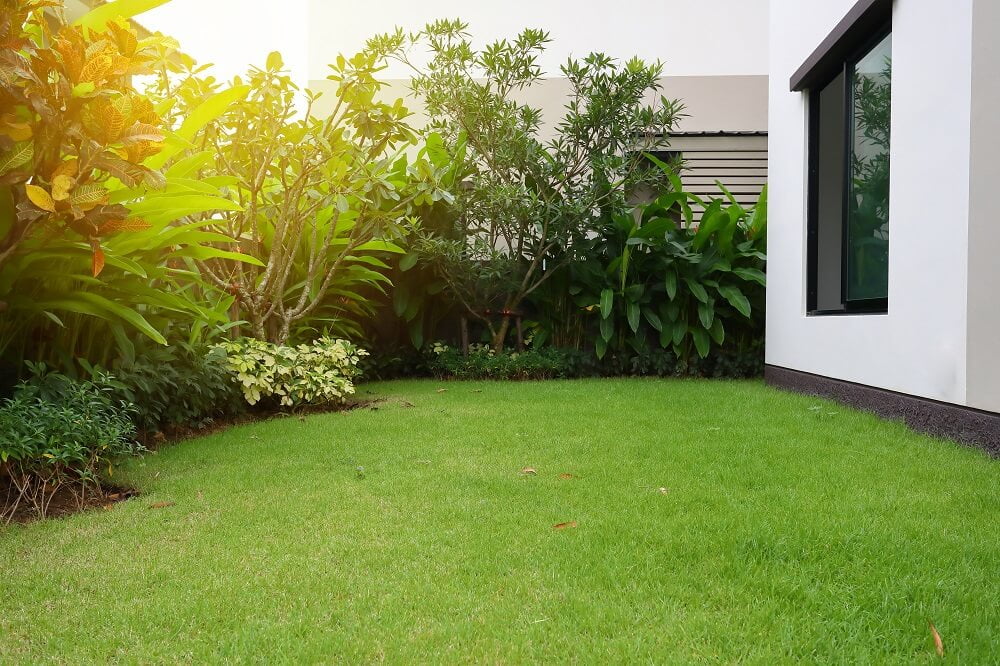
How do you separate the grass from the bark? This is a question that garden design enthusiasts often ask themselves. The variety of elements that make up the aesthetics of our gardens is incredible. Grass, plants, flowers and, among them, often also bark — each of these components has its own place and function to fulfil. Although at first glance they may appear to be a small, indistinguishable element of the landscape, they separation of bark from grass is not only an aesthetic issue, but also a functional one. By separating the bark from the grass, we can control their growth and development, allowing us to maintain balance and harmony in the garden. Understanding the basic principles of separating these elements is key to achieving the desired results for anyone who wants to keep their garden beautiful, healthy and balanced.
Considering, with what to separate the bark from the grassIt is important to understand the available materials and their properties. The choice of material depends on various factors, such as climate, type of substrate, as well as individual preferences and aesthetic requirements. Materials that are commonly used for separation of bark from grass, such as wooden, concrete or plastic garden edging.
Plastic garden edging is popular for its versatility, ease of installation and the wide range of styles available. They are ideal for those who appreciate speed and simplicity. They are durable and can withstand extreme weather conditions. Natural barriers such as stone or wood, on the other hand, can further enhance the natural character of the garden, creating cohesion with the surroundings. Each of these options has its own advantages and disadvantages, so before making a decision, with what to separate the bark from the grass, it is worthwhile to carefully analyse your needs and expectations.
Before you start, think about what areas you want to separate — whether it’s flowerbeds from the lawn, paths from flower beds, or perhaps trees from the rest of the garden. Use string and pegs to mark out the lines of the edging, which will help you visualise the design and make any adjustments before you start. Think about the shape of the edging: straight lines give the garden a modern look, while wavy patterns introduce a sense of naturalness. It’s also important that the edging is functional — it should be high enough to hold the bark in place, but not so high that it gets in the way of plant care. Also plan for the edging to be easy to install and maintain, which will save time and effort in the future.
At the outset, decide exactly where you plan to carry out the separation. Once the site is chosen, prepare the materials. As mentioned earlier, these can be plastic or other garden edging. Then, taking into account the chosen material, proceed with the installation. Usually, the edging is fixed to the ground with anchors. By choosing plastic edging, you gain the possibility to easily form it into any desired shape.
Try to ensure that the barrier created is stable and effectively separated the bark from the grass. A properly executed separation will not only ensure an aesthetically pleasing division, but will also protect the plants from disease and allow you to control their growth. Once the work is complete, check the results of your work from different perspectives to ensure that the two areas are clearly divided. Remember that understanding is key, how to separate bark from grassto keep the garden beautiful and tidy.
One of the simplest and most effective solutions to effectively separate grass from bark is to garden edging. Practical and aesthetically pleasing, they are easy to install and come in a variety of colours, so you can easily match them to the style of your garden. They have many uses, the most important of which is, of course, the separation of bark from grass.
Garden edgings create a clear dividing line between areas, which not only improves the aesthetics of the garden, but also helps to keep things tidy and makes maintenance easier. They allow the growth of grass to be easily controlled, preventing it from entering the area intended for bark. In addition garden edging they provide additional protection for plants against diseases by preventing harmful organisms from spreading from one substrate to another. By choosing the right edging, we can have a significant impact on the appearance and functionality of our garden, so it is worth understanding how important they are garden edging in the process of separating the grass from the bark.
Well-integrated edging is an essential element that combines functionality with the aesthetics of the garden. Consider using plastic edging, especially recycled plastic edging, which is an eco-friendly choice and can blend in perfectly with the surroundings. Their subtle form allows them to blend harmoniously with the natural landscape without disrupting the overall aesthetic of the space. When choosing plastic edging, you can also easily experiment with shapes and layouts, giving you the opportunity to create unique solutions tailored to the style of your garden. Remember that edging is not only practical, but also a decorative element that can make a significant difference to your overall landscape.